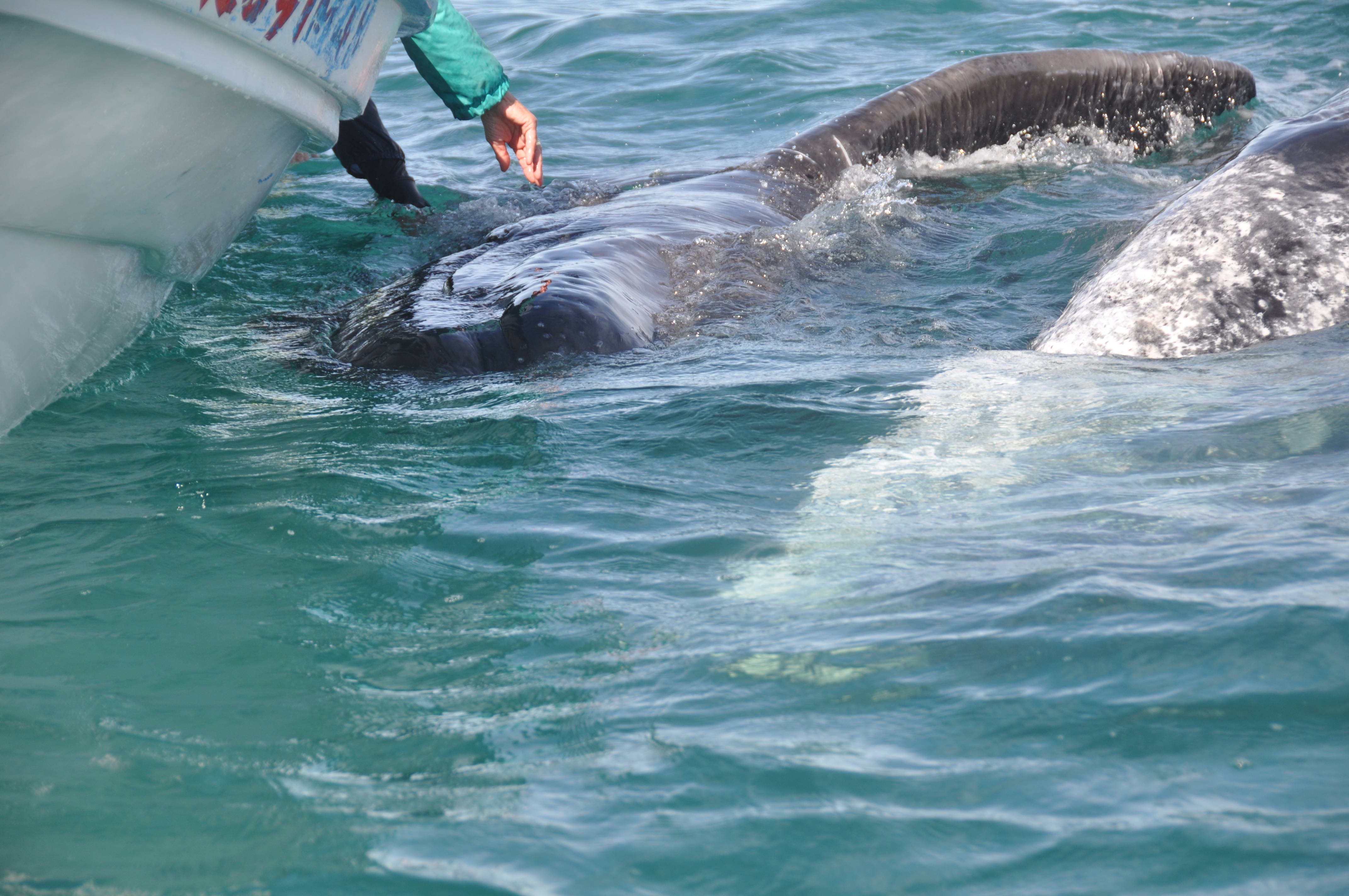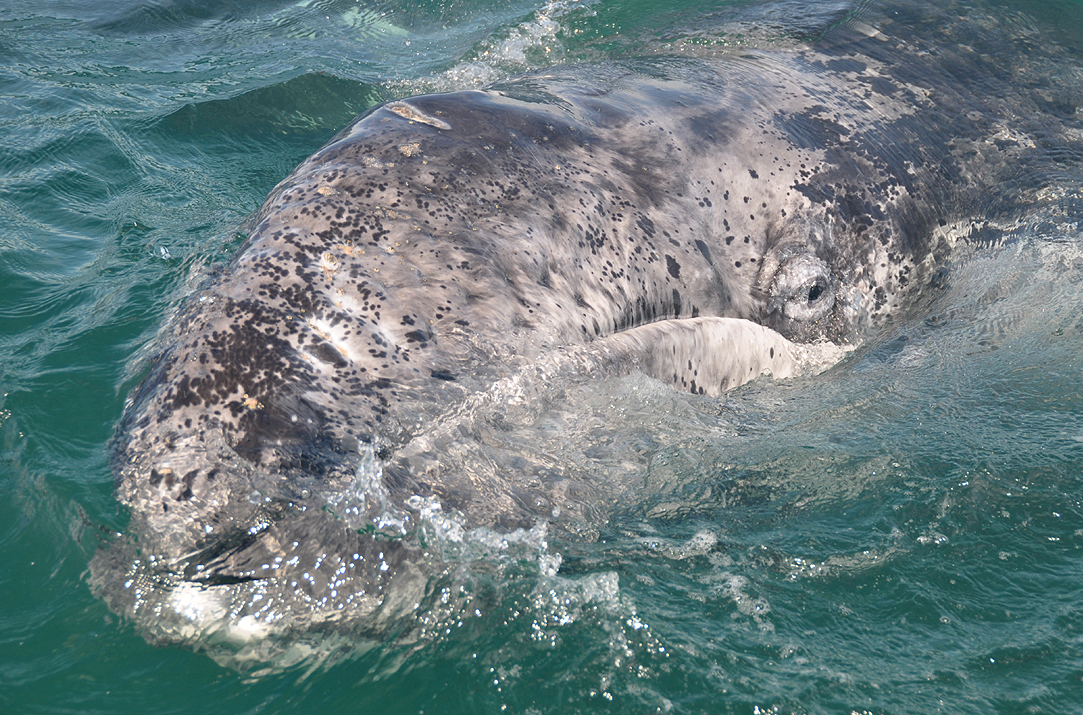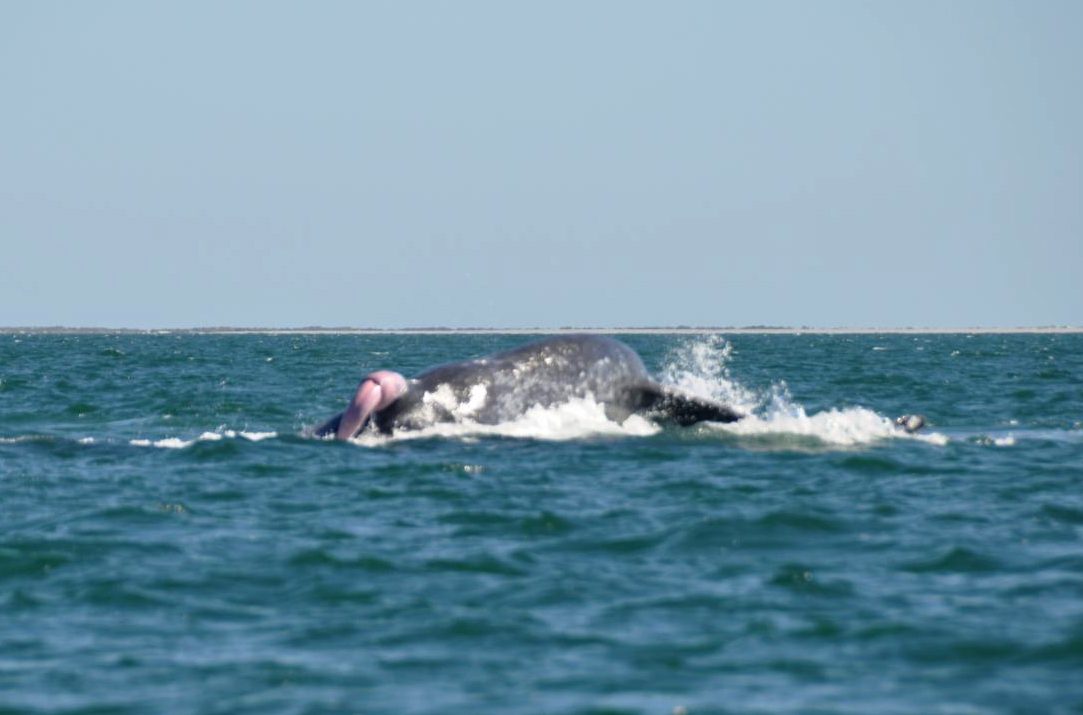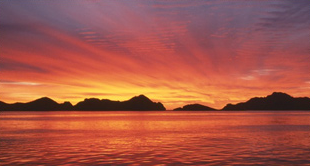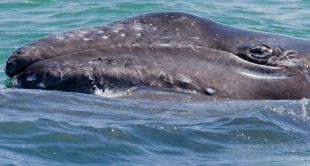Body contact is essential – not only for humans. The calf is rolling over the back of its mother. Repeatedly. It is lying on her – sometimes touching her with its back, sometimes with its belly. It gained some weight since we have been here the last time, two weeks agohttp://en.oceano-whalewatching.com/fernreisen/mexiko-vamos-baja-california/.
The Gray whale baby is easy recognizable for us due to the spots, signs and barnacles on its soft and still strong skin. It has now the ability to dive longer and lift its fluke higher. It is remarkable how important the training in the countercurrent system is and how much time is spent in the so called mouth – the entrance respectively exit to the Pacific.
We are in the San Ignacio Lagoon – part of the Vicaina biosphere reserve in the Baja California Sur where the lagoon flows into the Pacific, where there are strong currents which the whale mothers use as a gym for their whale babies, to prepare them for the long journey to Alaska.
These whale babies are born in this lagoon, hence are Mexican Citizens, and are spending 75-90 days with their mothers here, who are taking good care of them, not letting them out of sight. During this time they drink a lot of aliphatic milk and grow 2-3 cm each day. At the end of March or beginning of April, depending on the date of birth, they start their long journey. The team of mother and calf hit the (water) road and leave the protected lagoon. Currents, winds and killer whales can make their journey even more difficult.
Every time I’m petting a whale baby I wish him or her a good and pleasant journey. Travelling with them is my hope to meet each other again in the next year….
However, during their first years, the one year old’s usually don’t travel all the way back after the “harvest time” in Alaska. They don’t have anything to do in the shallow waters in the pacific lagoons. They are not yet sexually mature (puberty starts between 7-9 years) and often they only travel a part of the journey with the other gray whales. When the time of fertility starts, they come into the lagoons to observe how mating is done. Amongst the males there is lots going on, for example their fights with their “Pink Floyds” (coll. Gray whale penis).
The 3 days in the Gray whale camp is the highlight and core of our Vamos Baja journey.
Yet, this is only something for nature loving, flexible and open people because we go offline (yes, that is still possible), live in wooden huts, take showers with buckets and cans, eat simple dishes, meet coyotes at the beach, observe how Bottlenose dolphins pass by the lagoon, when the orange sunset light is reflecting on their skin, count ospreys, pelicans and a lot of stars and while all of this is happening, we encounter many remarkable people.
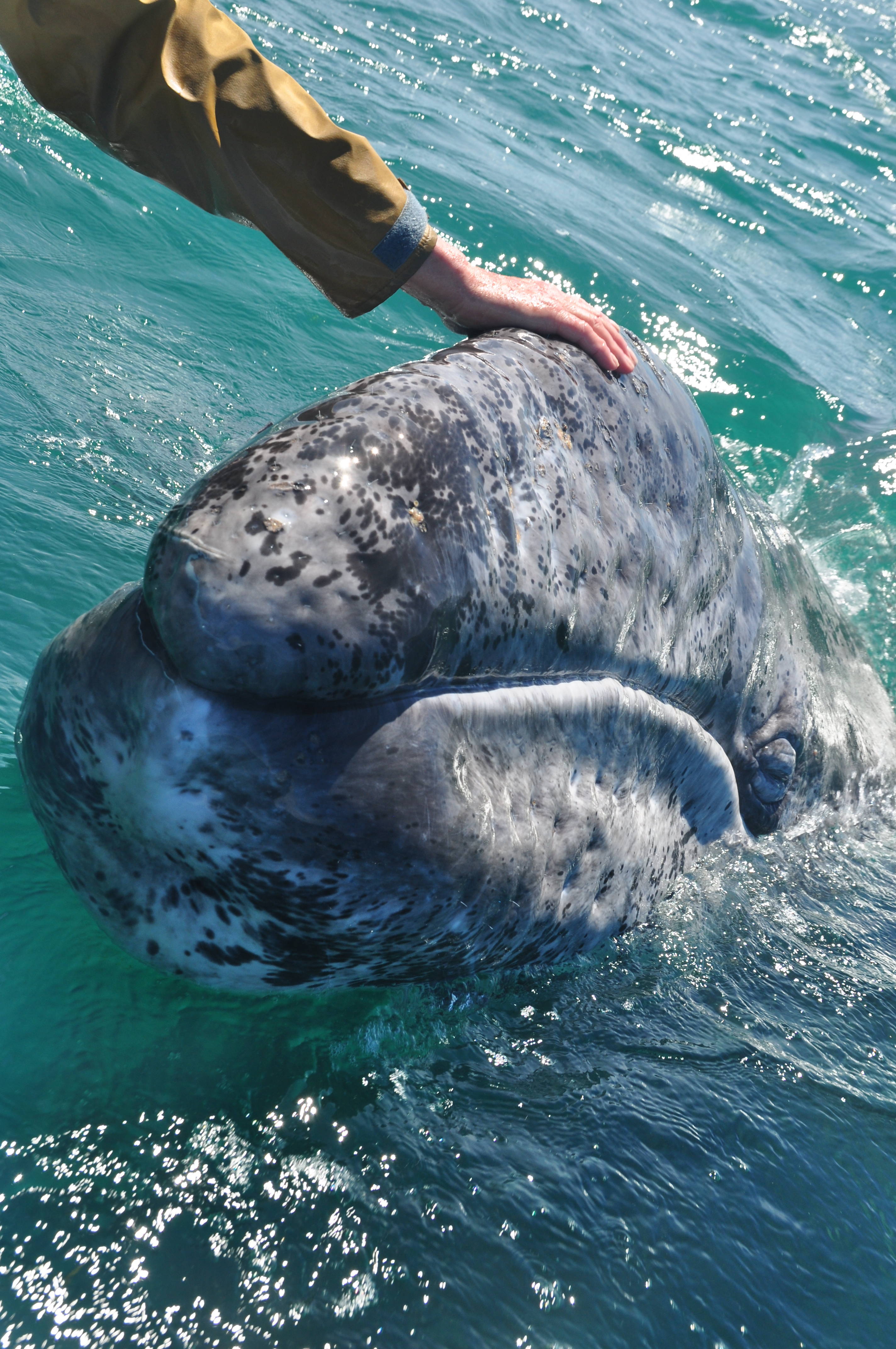
Because who didn’t already fell for it on board, has now the chance to be touched and softened by the loving and respectful team of this unique family business. When Carlos is getting his guitar or Sharanga and starts playing profound and soulful songs, many are truly amazed since one doesn’t expect so much spirit in this simple camp without any ecological footprint.
As he was playing the song for the Gray whales at the end, he got also the last listener and some tears were rolling down one or another cheek.
Once – or for those who like also twice – a day we go out on a tour to meet the Gray whales. I was very excited to be in the Camp twice this year. Would 2 weeks make any difference in the behavior of the Gray whales?
Yes, it did. The “small” baby whales were already a little bit chubbier, could dive longer, and increased the distance between themselves and their mothers. We recognized some couples of mothers and their calves.
At our first visit, 135 mother/calf couples and 130 individuals were in the lagoon. The second time it was 110 mothers with their offspring and 7 single individuals, at the next count there were 109 mothers with calves and no single animal (= male or female without calves, who got pregnant again). The mothers and their babies are always the last ones to start their way back. Before the long journey starts, they often take some time to play with the boats…
We want to meet you again and be touched by touching you!
By the way, Gray whales also do sounds. Their sounds are more in the deeper area of tones. Interesting to listen to are the ostensible sounds in the lagoon which are made by crustaceans. Listen to some examples here:
http://www.sanignaciograywhales.org/2015/12/sounds-of-gray-whales/
On my last tour in the last moment – one part of me doesn’t want to return where others are already looking forward to the European food – I get a huge whale shower: with her blow, a Gray whale mother splashes water over the boat. Salty water and tears are running down my laughing face – I remain still and thankful – we had such amazing encounters! The world would be much poorer without this celebration between whales and human beings.
Thanks so much and have a good journey Carinos!
Susanne Braack



